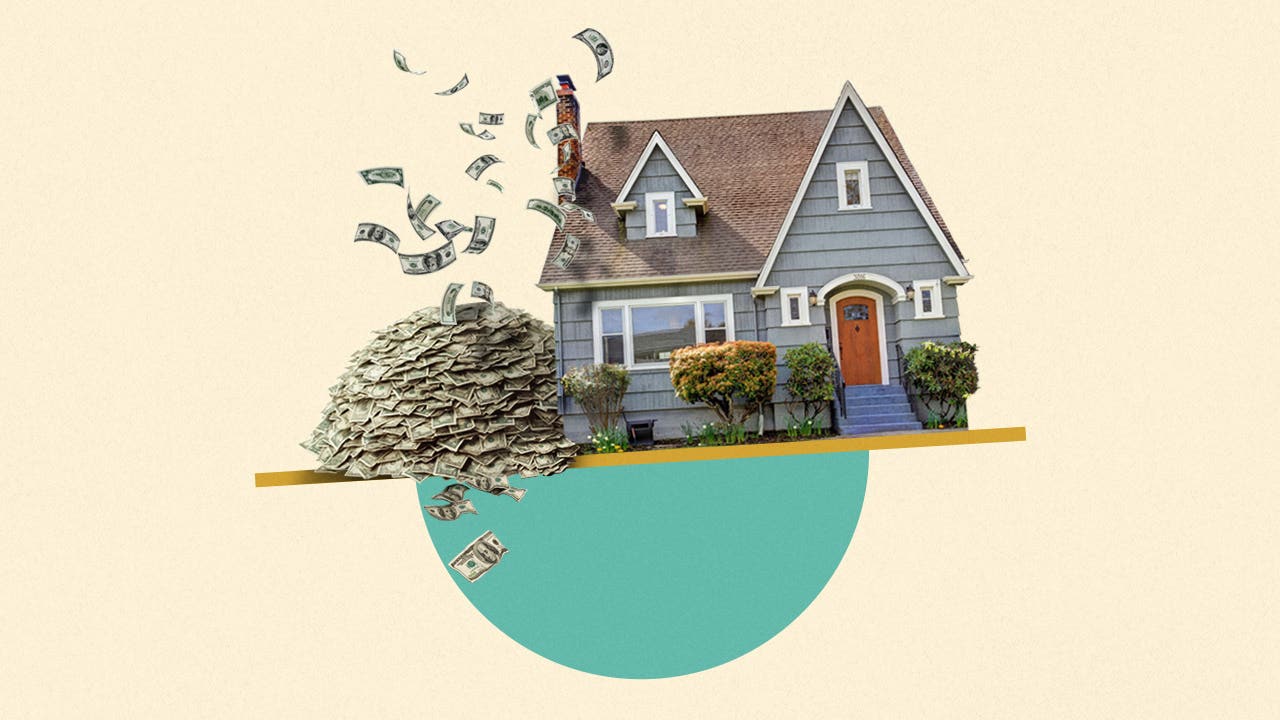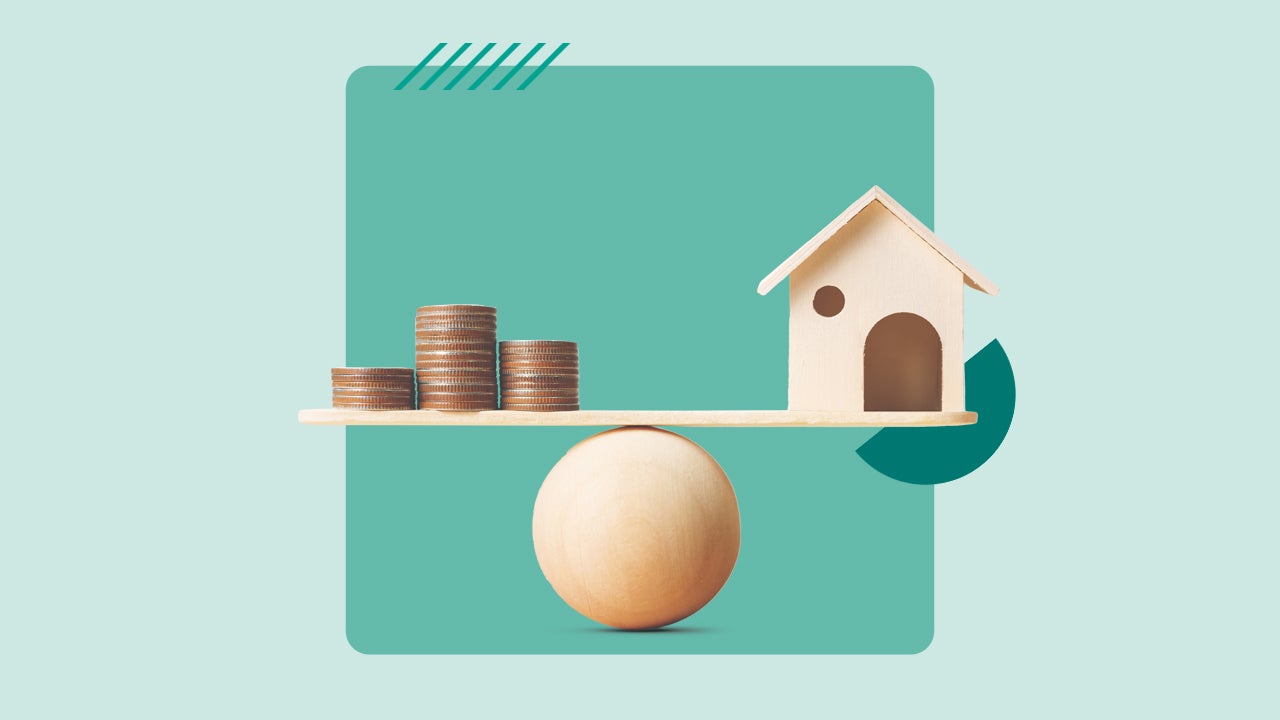What is mortgage interest?




Key takeaways
- Mortgage interest is the cost of borrowing money from a lender, expressed as a percentage of your loan amount.
- Part of your monthly mortgage payment repays the amount you borrowed, and part goes toward your interest.
- Your mortgage interest rate depends on prevailing rates, as well as your credit score, down payment size and other factors.
What is mortgage interest?
Mortgage interest is the amount you pay a lender to lend you money to buy a home. You’ll see your interest expressed as a percentage. When you make your monthly mortgage payment, part of the money goes toward your principal — paying your lender back the money you originally borrowed — and part also goes toward interest. Charging interest is how lenders make money.
Comparing rates from multiple lenders is a crucial part of the homebuying process. Your rate impacts how much house you can afford — if you have a fixed monthly housing budget, a higher rate means more of that budget is taken up by interest payments — and how much your home costs you over time.
In general, shorter-term loans, like 15-year mortgages, have lower interest rates than longer-term loans, such as 30-year mortgages, and cost less in interest overall. However, longer-term loans also have much lower monthly payments, so they’re more manageable for most people.
How does mortgage interest work?
Your mortgage interest is a percentage of your balance, or the amount of money you still owe your lender. As you repay your mortgage, you’ll make monthly payments based on your loan’s amortization schedule.
At first, most of your monthly payment will go toward interest. However, as you continue to make payments and reduce your principal, more of your monthly payment will go toward repaying your original balance.
Mortgage interest rate example
Say you take out a 30-year mortgage for $320,000 at a fixed rate of 6.75 percent. Your monthly payment — excluding insurance, taxes and other fees — is $2,076. During your entire loan term, assuming you pay your mortgage on schedule, you’ll make $427,185 in interest payments.
Using Bankrate’s amortization calculator, here’s how your amortization schedule would look for the first year of your mortgage:
| Monthly payment | Principal payment | Interest payment | Remaining loan balance | |
|---|---|---|---|---|
| Month 1 | $2,076 | $275.51 | $1,800.00 | $319,724.49 |
| Month 2 | $2,076 | $277.06 | $1,798.45 | $319,447.42 |
| Month 3 | $2,076 | $278.62 | $1,796.89 | $319,168.80 |
| Month 4 | $2,076 | $280.19 | $1,795.32 | $318,888.61 |
| Month 5 | $2,076 | $281.77 | $1,793.75 | $318,606.85 |
| Month 6 | $2,076 | $283.35 | $1,792.16 | $318,323.49 |
| Month 7 | $2,076 | $284.94 | $1,790.57 | $318,038.55 |
| Month 8 | $2,076 | $286.55 | $1,788.97 | $317,752.00 |
| Month 9 | $2,076 | $288.16 | $1,787.36 | $317,463.84 |
| Month 10 | $2,076 | $289.78 | $1,785.73 | $317,174.06 |
| Month 11 | $2,076 | $291.41 | $1,784.10 | $316,882.66 |
| Month 12 | $2,076 | $293.05 | $1,782.46 | $316,589.61 |
In your first month, when your loan balance is as big as it will ever be, most of your monthly payment goes toward interest. That will continue to be the case until about 20 years into your loan — but with each payment, a little more goes toward principal and a little less goes toward interest.
In the last 10 years of your loan term, the majority of each payment will cover your principal. Then, at the end of your 30-year term, you’ll fully pay off your balance and no longer be charged interest.
Current mortgage interest rates
After falling below 3 percent during the pandemic, mortgage interest rates increased to an average of nearly 8 percent in October 2023. They’ve fallen since, but they’ve still remained above 6 percent.
However, as of this writing, rates have been moving slowly lower for the past few weeks. Today, the current average interest rate for a 30-year fixed mortgage is 6.69 percent. And there’s more good news: In a recent Bankrate survey, the majority of mortgage experts predicted that rates will fall slightly in the near future.
Mortgage interest on different types of loans
While you’ll pay interest no matter your mortgage type, you can choose between a mortgage with a fixed or adjustable interest rate. Depending on your situation, you may also consider interest-only mortgages.
Fixed-rate mortgages
With a fixed-rate mortgage, your interest rate stays the same during your entire loan term. Although other expenses that are often wrapped into your mortgage payment — such as homeowners insurance premiums — can change, your monthly payment for principal and interest will remain consistent. Most mortgages in the U.S. are fixed-rate loans.
Adjustable-rate mortgages
If you have an adjustable-rate mortgage (ARM), your mortgage interest rate can change during your repayment period. Your ARM may come with a low introductory rate for the first several years of your loan, but after that, your rate can go up or down — which can increase or decrease your monthly payment.
Interest-only mortgages
With an interest-only mortgage, you’ll make payments only toward the interest during an introductory period, giving you smaller initial monthly payments. However, after the introductory period ends, your payments will increase significantly to cover principal and interest. Interest-only loans aren’t very common and aren’t suited for many homebuyers.
APR vs. interest rate
The interest rate on your mortgage only accounts for the cost of borrowing money. The annual percentage rate, or APR, on the other hand, accounts for your mortgage interest rate and other costs, including lender fees and discount points. Like the interest rate, APR is expressed as a percentage, but because it includes these other charges, it’s always higher than the interest rate.
Your lender must disclose your loan’s APR upfront, but it’s still important to ask what the APR includes. For example, some APRs don’t include credit report or appraisal fees. Keep in mind that you can try to negotiate some loan fees, especially if you’re a well-qualified borrower.
How to get the best mortgage rate
While a certain amount of your interest rate is determined by market forces, your lender also has input into what you’re charged. If you seem likely to pay back what you borrow, you’ll typically be charged less than someone who hasn’t repaid debts in the past, for example.
To increase your odds of getting the best possible mortgage rate, follow these tips:
- Improve your credit score: A good credit score shows that you have a history of handling debt responsibly. Well ahead of applying for a mortgage, work to boost or maintain your score by paying your bills on time and lowering your credit utilization ratio, the amount of credit you use relative to your credit limit.
- Build your down payment savings: Lenders tend to offer better rates to borrowers who make larger down payments. Consider automatically setting aside a portion of your income into a savings account or looking into down payment assistance programs.
- Compare rates: Comparing at least two offers can save you significantly (think: $1,500 or more) over the course of a 30-year loan, one Freddie Mac study found.
- Consider a low-credit mortgage: If your credit score isn’t as high as you’d like it to be, you may qualify for an FHA loan. FHA loans can sometimes have a lower interest rate, by about a half a point or more, compared to a conventional loan.
- Work with a mortgage broker: A broker can help you negotiate a lower rate, and many don’t charge. Look for a broker who has experience with the type of loan you’re after.
- Pay points: If you expect to stay in the home long term and won’t refinance for at least five years, you may want to pay an additional fee, known as a point, to trim your interest rate. Each point typically costs 1 percent of the loan amount and reduces your rate by 0.25 percentage points.
FAQ
You may also like

How to get the best mortgage rate

How are mortgage rates determined?


